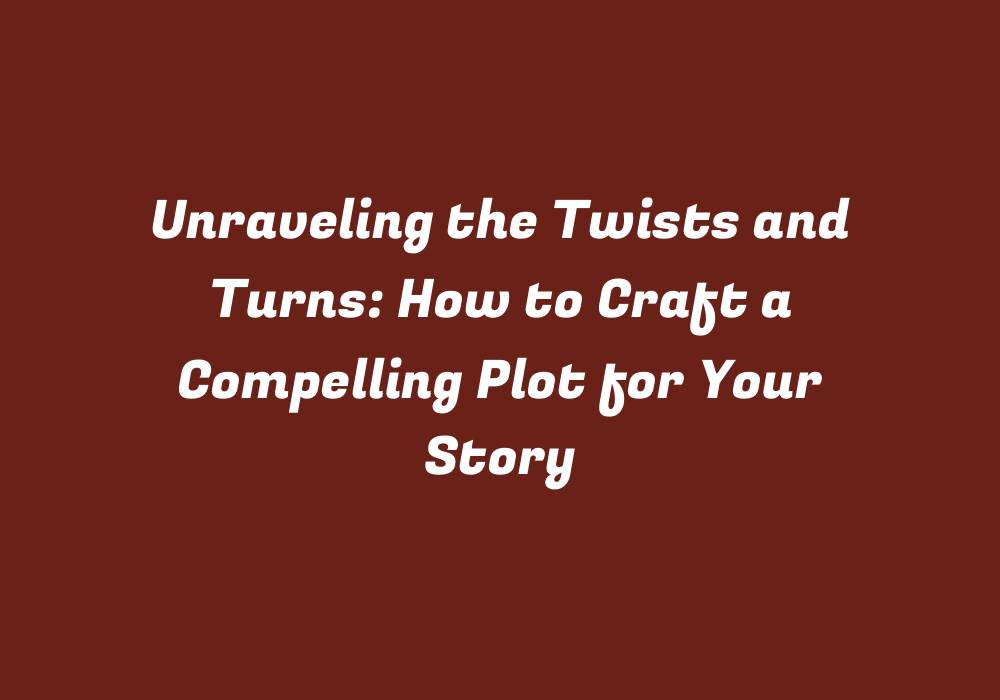Introduction
A compelling plot is the backbone of any well-written story. It drives the narrative forward and ensures readers are engaged from start to finish. To craft an outstanding plot, writers must understand its essential components and learn how to navigate their twists and turns effectively.
The Building Blocks of a Compelling Plot
1. Establishing the Setting – Before diving into the heart of your story, set the stage by creating an engaging world for the characters to inhabit. This can be achieved through vivid descriptions and establishing crucial information about the setting’s culture, climate, geography, and more.
2. Introducing the Characters – Your characters must have depth and complexity that will keep readers invested in their journey throughout the story. Consider their backstory, motivations, and emotional arc as essential elements of your character development process.
3. Creating a Conflict – A compelling plot revolves around conflict, which can be internal or external in nature. Conflicts keep readers hooked by presenting obstacles that must be overcome, driving the narrative forward and generating tension that propels the storyline.
4. Implementing Pacing – Maintaining an appropriate pace throughout a plot is crucial to prevent reader fatigue or boredom. The ebb and flow of action, dialogue, introspection, and reflection should be balanced to keep readers engaged while maintaining interest in the characters and their circumstances.
Navigating the Twists and Turns
1. Mastering Character Motivation – Understanding your characters’ motivations is vital when crafting a compelling plot. Readers should be able to empathize with or dislike these motivations, which ultimately drive their decisions and actions throughout the narrative.
2. Integrating Subplots – Incorporating subplots into your main storyline can provide additional depth and complexity, while also creating opportunities for unexpected developments and twists to occur.
3. Developing Unforgettable Antagonists – A well-crafted antagonist is an essential element of a captivating plot. Their actions and motivations should mirror those of the protagonist, creating a dynamic tension that drives the narrative forward.
4. Utilizing Red Herrings – Introducing misleading clues or red herrings can create intrigue for readers while keeping them on their toes, as they try to anticipate and predict the unexpected twists and turns in the plot.
5. Establishing Unpredictable Events – A compelling plot relies heavily on unanticipated events that keep readers guessing and captivated by the story’s development.
Tying it All Together: Plot Coherence
1. Ensuring a Clear Beginning, Middle, and End – A well-structured plot will have an easily recognizable beginning that introduces the characters and conflict, a middle section filled with twists and turns that keep readers engaged, and a satisfying conclusion that brings closure to the narrative arc.
2. Maintaining Consistency – Keeping track of details throughout your story ensures consistency in character behavior, setting descriptions, and plot progression. This attention to detail will prevent inconsistencies that may distract or confuse readers.
3. Balancing Clarity and Complexity – While a compelling plot should contain elements of surprise and intrigue, it’s important not to overcomplicate the storyline, as this can lead to reader confusion or frustration. Strive for a balance between clarity and complexity that captivates readers while still being easily understood.
4. Revising and Editing – Before sharing your story with others, take the time to revise and edit it thoroughly to ensure its plot is well-crafted and coherent. This process can help identify and address any weak spots in the narrative that might hinder readers’ enjoyment of the overall experience.
Conclusion
Crafting a compelling plot for your story requires careful consideration of its essential components and an understanding of how to effectively navigate the twists, turns, and unexpected events that will captivate readers. By mastering character development, creating a clear structure, and maintaining consistency, you can ensure that your story’s plot is engaging and unforgettable for readers.
